Households can now think about harnessing wind power as well as solar:
- A super-efficient and completely soundless wind turbine developed by a Dutch company aims to enable every household to generate its own wind energy.
Officially unveiled today, the shell-shaped Liam F1 Urban Wind Turbine offers much better efficiency compared with conventional designs. Its shape, modelled after the perfectly logarithmic spiral of a Nautilus shell, allows the turbine to always position itself at the best angle towards the direction of the wind, achieving efficiency which is about 80 per cent of what is theoretically possible.
With an average speed of wind of about 5m/s, the turbine generates about 1,500 kilowatt-hours of energy – about half of the consumption of a regular household. The Archimedes, the company behind the Liam F1 Urban Wind Turbine, believes that in combination with efficient solar panels, the turbine can make every household completely energy self-sustainable.
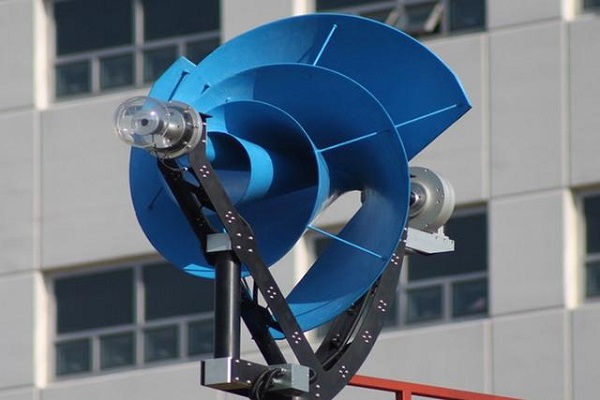
Wind of course has the advantage that it blows through the night, approximately as much as by day.
John Morgan has done an interesting post at Brave New Climate on the intermittency problem and what he calls the ‘capacity factor’. He looked at the output of all grid-connected wind farms connected to the National Electricity Market (NEM) grid, which covers the eastern states including Tasmania, but excludes Western Australia and the Northern Territory, through data from the Australian Energy Market Operator (AEMO). This is what he came up with:
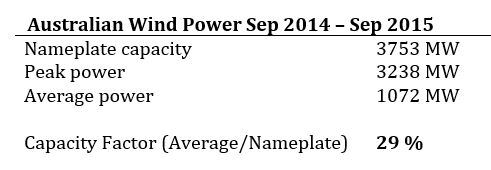
Peak power is less than nameplate power simply because the wind doesn’t blow flat out everywhere at once. Sometimes it hardly blows at all, so the average is less than a third of nameplate power. So when you hear that a wind farm with X capacity was built, you have to realise that the power it creates in practice will be far less.
Morgan was documenting power at 5 minute intervals. When he looked at whole days he found that the whole grid never yields more than 75% of capacity (2810 MW). On the worst day it yielded just 2.7%.
He then looked at runs of low days and found 29 days in which output was below 10% of capacity, and 127 days below 20% capacity.
- of the 29 days of wind output below 10% of capacity, 15 are single isolated low wind days, and then there are 7 pairs of 2 day long low wind runs. If we look for sequences of days with less than 20% output, we find 2 runs of 5 low wind days.
If we were to build more capacity to boost the actual power supplied we would reach a point where peak production exceeded demand. He seems to think that without spillage or storage we can’t supply more than 33% of power via wind, less if we include some solar.
For me the question remains as to whether battery storage can cope with long runs of low power output. The ACT is aiming to have 90% of its electricity supplied by renewable energy by 2020, and 100% by 2025, so they will have to find out. In this regard it’s disappointing to hear that their plans to support the installation of 36MW of battery storage capacity in Canberra over the next four years will do so only in homes and businesses, not in large scale power facilities. Some 5,000 Canberra homes and businesses will be involved.
Another question is how quickly can the ‘balancing’ power be fired up and down to match the volatility of wind. This is what the year looks like at 5-minute intervals:
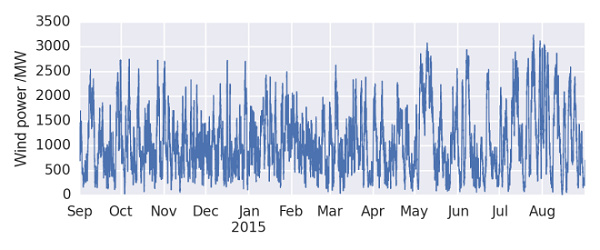
Beyond Zero Emissions (BZE) recommends using vats of molten salt for storage in large-scale facilities. (You can download their Stationary Energy Plan from here.) Salts can be heated up to 600°C and can be then stored in insulated vats for weeks, losing less than 1% per day on average. They see wind power as doable up to 50% of total supply. These graphs plot supply against demand in West Denmark at 25% and 50% in January 2008:
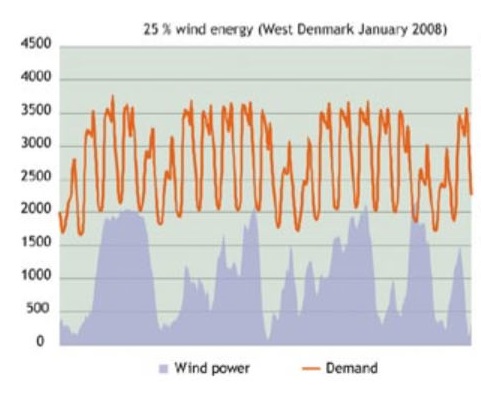
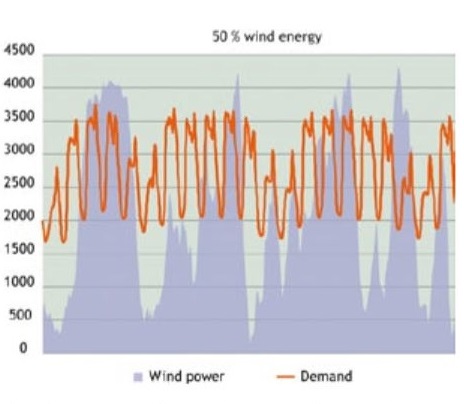
The 50% example shows some spillage. Smoothing through storage would have to operate over runs of several days at a time. BZE calculates that 25 tonnes of salt is required for every MWh of energy. BZE is suggesting 52ML of storage for each “Solar 220” unit. As far as I can make out the unit produces 217 MW of energy and 52ML of storage is recommended, which would produce 17 hours of power. By comparison the largest crude oil tank at Altona Refinery has an operational capacity of 80ML, with dimensions 24m high x 72m diameter, so we are looking at large vats.
To sum up, the new Dutch turbine brings wind to the household level, but wind at large is still going to be a major player. As such its actual output will be possibly less than a third of its nameplate capacity and it is going to need to be smoothed by quite significant storage. So far we lack real life examples of this being done to produce reliable, continuous cost-effective power.
Using salt vat storage is easier for large-scale solar, since a turbine is already part of the system. To store energy from wind farms you would have to build an extra turbine somewhere with storage attached. This may not be cheaper than installing batteries at the point of usage.
BZE has a Zero Carbon Communities project. So far we’ve been told about the Zero Emissions Byron Project, but Zero Carbon Communities works across six sectors and so far I can’t see anything tangible in the way of wind power.
Australia has more than useful wind potential, in the south and up the east coast where the people mainly live:
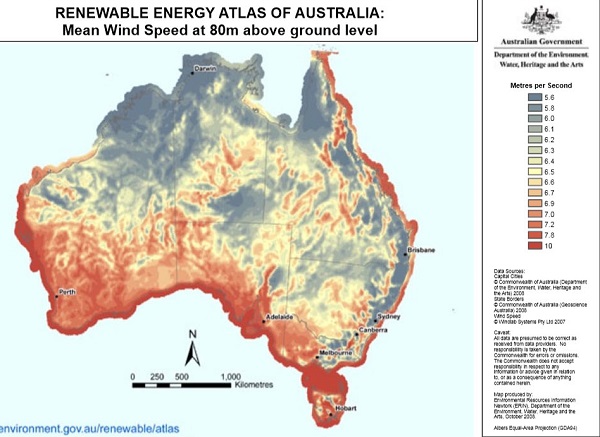
We will watch developments with interest.


I’d like to see that thing tested in water.
The tides never rest and are known years in advance. ( extremely small storage required.)
Some Tidal electricity in clean slate areas of N/W Australia would be interesting.
( bottom map )
(( I’m talking tidal not sea currents ))